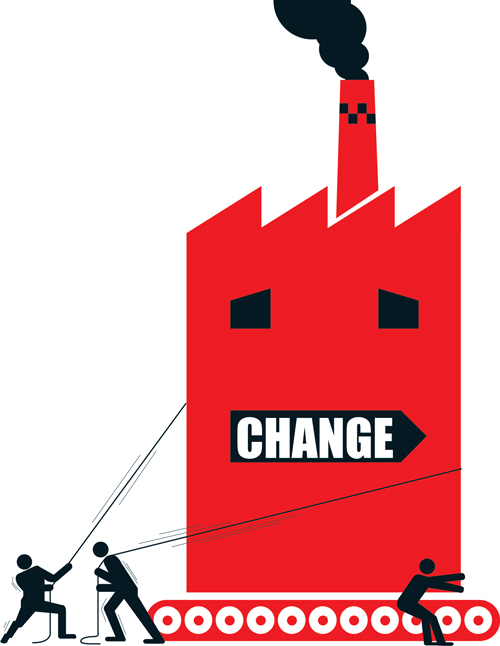In truth, organisational change, and the way it is managed, is very much about this dynamic — as a group, people pushing a change forward, while simultaneously resisting and resenting it at an individual level. The goal for an organisation’s leadership is to make sure that such aversion is only to the idea of change, rather than the reality of it.
For a business, change is a new approach to market. It’s a new product line. It’s a strategic direction that has the promise of future returns.
Change is fresh ideas, it’s new management talent, and it means staying ahead of the competition. Even if you’re talking about a long-established, highly-successful business with a tried-and-tested way of doing things, the idea of change is usually greeted as a welcome innovative spur, refreshing the business and ensuring longevity. But for the people within it, change is often seen in considerably less positive terms. Employees often view change through the lens of their own self-interest, and consider only how it appears to be adding to their workload.
The change could be the creation of new teams, or the adoption of a new IT system, but the headline news for individual employees will be how it negatively impacts their day-to-day work.
Beyond that narrow focus, employees also often resist change because they simply disagree with what is being done... and how it is being carried out. Let’s say, for example, that a business aims to reorganise the way it handles its supply chain — introducing new systems and procedures for how it will get things done.
Supply chain employees might naturally feel that their close perspective on how things operate should carry weight, and may be actively resistant to change if it isn’t changing as they would like. They might not disagree that things need to be done. They just disagree with how effective the proposed solution will be.
It’s also not true that aversion to change is limited to employees. Managers are the people tasked with making sure a change initiative proceeds as planned, so can also fear that change spells more work, more responsibility, and more potential for difficulties ahead.
Managers’ resentment
And even the leadership team that initiated change in the first place might personally resent the grinding early stages while the effort gets underway. After all, they are the ones whose reputation is at stake on the undertaking’s outcome. And they are the ones who will need to do the heavy-lifting to energise people and convince them the effort will be worthwhile.
Whether the change in question is a significant change of personnel, an organisation-wide restructuring, or modifications to how a single department operates, successful initiatives really come down to clearly establishing the narrative. Once leaders have the proposed directional course, they must be certain they have a clear, unambiguous, and compelling narrative that connects this new direction with the organisation’s success.
If the change initiative is built on something stronger than gut instinct or a leader’s hastily brainstormed suggestion — which it hopefully will be — this should be simple to do. The compelling reasons that made the change appear necessary will become the storyline that leaders need to internalise and believe in.
Once they’ve done that, the important thing is they tell the story. And like a story, there needs to be a beginning, middle, and an end. Every person in the business needs to know what the change is they’re embarking on.
They need to know how the process will look, its different stages, and its possible challenges. And they need to know the end point — the reason for starting, and the reward for the effort.
More importantly, they need to know “why”. The narrative needs to be clear that the change initiative is expected to achieve certain goals, and that the current course of action is less suited to achieving these things.
This means sharing figures, showing your working, and presenting the change as the logical next step for the business.
Ultimately, change initiatives are successful where leaders have established the narrative, and answered the “who, what, when, where, why, and how” questions that people in the business will ask.
Doing so early and pre-empting the almost inevitable resistance that every change inspires, is the best way to take hold of the narrative, and keep a business focused on making the change a success.
Ahmad Badr is CEO of Knowledge Group.













